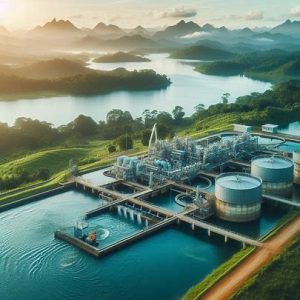 Every year, traces of pharmaceutical compounds find their way into rivers, lakes, and oceans. These substances, often flushed down toilets or released through waste systems, don’t just vanish. Instead, they persist, interfering with delicate aquatic life and ecosystems.
Every year, traces of pharmaceutical compounds find their way into rivers, lakes, and oceans. These substances, often flushed down toilets or released through waste systems, don’t just vanish. Instead, they persist, interfering with delicate aquatic life and ecosystems.
One of the biggest concerns is the growing popularity of performance-enhancing drugs like steroids Canada users turn to for physical improvement. While the human benefits are widely promoted, their environmental impact is rarely discussed. The problem isn’t limited to improper disposal. Even excreted remnants from users can re-enter water systems, traveling far beyond their point of origin.
Understanding Endocrine Disruption
Once in the environment, synthetic hormones like anabolic steroids can act as endocrine disruptors. These chemicals interfere with the hormonal systems of fish and amphibians. For example, male fish exposed to small amounts of these compounds have been found to develop female characteristics. This can lead to reduced fertility or even population decline in certain species.
The disruption isn’t always immediately visible. Changes in behavior, such as altered mating habits or feeding routines, can slowly destabilize the ecosystem. This creates a ripple effect, harming other species that depend on the same environment.
How It All Ends Up in the Water
Most wastewater treatment plants aren’t equipped to fully filter out pharmaceuticals. That means even drugs taken correctly and excreted through urine can end up in our waterways. Multiply that by thousands of users, and the numbers become alarming.
Additionally, improper disposal methods—like flushing unused pills—make the situation worse. Many people still believe that the toilet is a safe place to get rid of medicine. It’s not. These compounds don’t dissolve harmlessly. They persist.
The Manufacturing Footprint
Before these substances even reach consumers, they leave an environmental trail. The pharmaceutical manufacturing process can be heavy on chemical waste. If not managed properly, this waste can leach into nearby land and water, affecting soil quality and groundwater systems.
While major pharmaceutical companies may follow strict environmental protocols, underground or unregulated labs may not. These labs, often responsible for creating black-market performance enhancers, pose a serious ecological risk.
What Can Be Done?
We need better awareness at every level. Users should be informed of the environmental risks associated with their performance-enhancing routines. Doctors, trainers, and pharmacists can help by advising proper disposal methods and encouraging moderation.
Local governments and water treatment facilities should invest in updated filtering systems capable of capturing pharmaceutical contaminants. Even small improvements can make a big difference over time.
On the regulatory side, stricter controls on illegal manufacturing and better monitoring of pharmaceutical emissions would help minimize harm.
READ ALSO: From Earth to Wellness: Exploring Natural Supplements for Hormone Balance
Conclusion: Rethinking Responsibility
The environmental story behind performance-enhancing drugs often gets lost in the hype. But ecosystems can’t afford to be an afterthought. Clean water and healthy wildlife are part of what sustains us all. Whether you’re an athlete, a health enthusiast, or someone simply focused on personal improvement, understanding your environmental footprint matters.
Awareness is the first step toward change. If we don’t start looking beyond personal gains, the long-term cost might be one we can’t afford.

